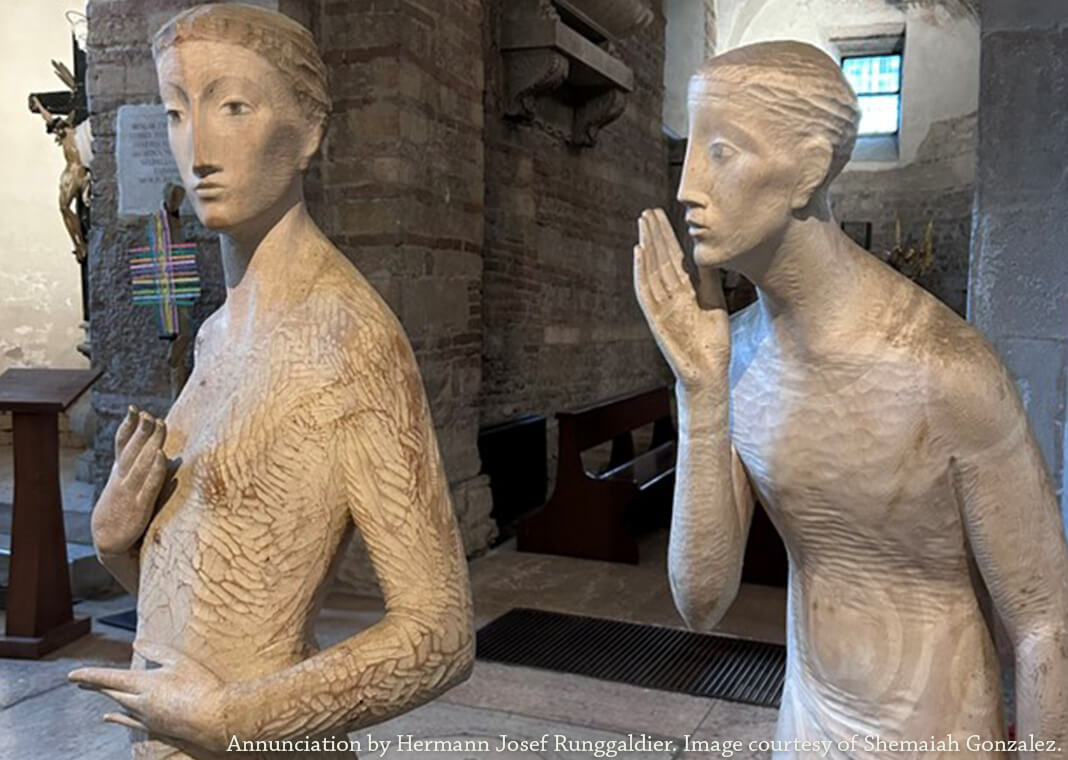
San Fermo Maggiore Church in Verona, Italy, features foundation stones from the fifth century, so I was quite surprised to find, tucked behind one of the central pillars bearing the weight of the upper church, an exquisite modern sculpture of the Annunciation. Sometimes modern art in ancient places is jarring. It doesn’t fit quite right. Yet this piece took my breath away.
Annunciation by Hermann Josef Runggaldier depicts the Virgin Mary and the Archangel Gabriel in two life-sized sculptures. Their elongated, manneristic bodies and simplistic, seemingly otherworldly clothing made me wonder if these art pieces might be older than imagined, but a placard let me know the work is from 2009.
Mary and Gabriel appear immobile and hushed. This is not the convivial, jovial manner in which the Annunciation is often portrayed. Gabriel has no wings. Nothing marks him as a heavenly being. He could be a man walking by as Mary purchases food in the marketplace or makes her way to the temple. It is as if all sound and movement around them stops as Gabriel leans forward from behind Mary to whisper, “Hail, Mary, full of grace, the Lord is with thee.” It is a quiet, frozen moment. Mary hears the still, small whisper, echoing the still, small voice of the LORD that Elijah heard in the Old Testament. But this message is for Mary alone.
This unusual depiction of a scene which I thought I knew and was familiar with captured my attention. The two figures are in a conversation. Each is very aware of the other, even though they are not facing one another.
The Virgin Mary’s ear is bent toward the angel, listening. Her left hand seems instinctively to move to her belly, to guard and protect the child in the very moment he is taking shape. She has already said yes. All happens in a split second. We are seeing that moment captured; the moment she hears God’s call and the moment she says yes are within the same frame.
Reflecting on this sculpture, I think how quickly Mary says yes. Fear or questions of doubt seem not to flood her. Only peace.
“Here am I, the servant of the Lord; let it be with me according to your word,” (Luke 1:38) Mary says to the angel Gabriel. Then Scripture says he departed from her. He was gone.
That’s the next frame in this sculpture. Mary turns around finally to see where the voice has come from, but Gabriel is gone.
I long for faith like Mary’s. To say yes, so quickly. To move in peace and in the security of her relationship with God. And yet this is the invitation each Advent: to answer the call God has for us. Will we, too, respond quickly and eagerly?
“Here am I, the servant of the Lord; let it be with me according to your word.”
